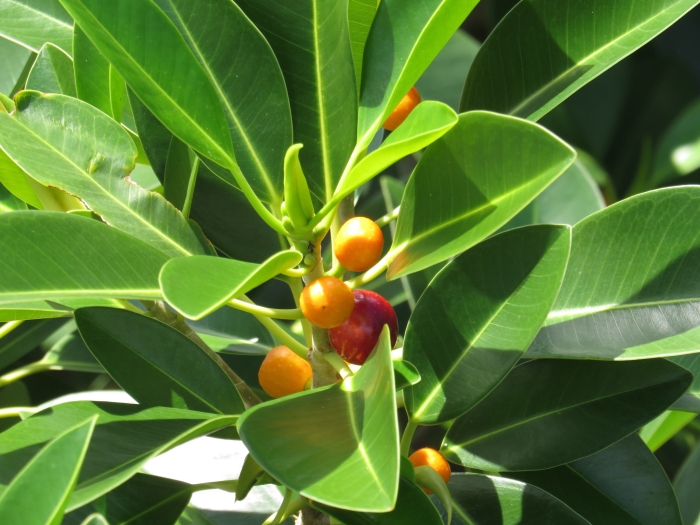Rusty Fig
(Ficus rubiginosa)
Rusty Fig (Ficus rubiginosa)
/
/

© coenobita
CC BY 4.0
Image By:
© coenobita
Recorded By:
Copyright:
CC BY 4.0
Copyright Notice:
Photo by: © coenobita | License Type: CC BY 4.0 | License URL: http://creativecommons.org/licenses/by/4.0/ | Uploader: coenobita | Publisher: iNaturalist |



























































Estimated Native Range
Summary
Ficus rubiginosa, commonly known as the Rusty Fig or Port Jackson Fig, is a species of flowering plant in the genus Ficus native to eastern Australia. It is an evergreen tree that can grow up to 30 meters (100 feet) tall and nearly as wide, with a distinctive yellow-brown buttressed trunk. The Rusty Fig typically inhabits rocky outcrops and cliffs within eucalyptus woodlands, coastal forests, and rainforest margins, often growing from seeds that have lodged in crevices. Its dense, spreading canopy provides significant shade and habitat for wildlife.
The Rusty Fig is valued for its dense foliage and shade-providing capabilities, making it a popular choice for large ornamental plantings in parks and golf courses. It features small, inconspicuous flowers that give way to small, edible fruits, although they are not widely consumed. The tree’s ability to grow in nutrient-poor, well-drained soils makes it adaptable to various urban settings. However, its aggressive root system can cause damage to nearby structures and pavements. In cultivation, it prefers full sun but can tolerate part shade, and it requires moderate watering and well-drained soils. While it is a versatile and attractive tree, Ficus rubiginosa is considered invasive in regions outside its native range, such as New Zealand, Spain, California, and Florida, where it can outcompete local flora and disrupt ecosystems.CC BY-SA 4.0
The Rusty Fig is valued for its dense foliage and shade-providing capabilities, making it a popular choice for large ornamental plantings in parks and golf courses. It features small, inconspicuous flowers that give way to small, edible fruits, although they are not widely consumed. The tree’s ability to grow in nutrient-poor, well-drained soils makes it adaptable to various urban settings. However, its aggressive root system can cause damage to nearby structures and pavements. In cultivation, it prefers full sun but can tolerate part shade, and it requires moderate watering and well-drained soils. While it is a versatile and attractive tree, Ficus rubiginosa is considered invasive in regions outside its native range, such as New Zealand, Spain, California, and Florida, where it can outcompete local flora and disrupt ecosystems.CC BY-SA 4.0
Plant Description
- Plant Type: Tree
- Height: 35-50 feet
- Width: 35-60 feet
- Growth Rate: Moderate
- Flower Color: N/A
- Flowering Season: Spring
- Leaf Retention: Evergreen
Growth Requirements
- Sun: Full Sun, Part Shade
- Water: Medium
- Drainage: Medium
Common Uses
Bird Garden, Drought Tolerant, Low Maintenance, Potted Plant, Street Planting
Natural Habitat
Eucalyptus woodlands, coastal forests, and rainforest margins
Other Names
Common Names: Rusy Fig, Higuera Mohosa, Rostrote Feige
Scientific Names: , Ficus rubiginosa, Ficus rubiginosa f. glabrescens, Ficus australis, Ficus ferruginea, Ficus fulva, Ficus novae-walliae, Ficus rubiginosa var. glabrescens, Ficus rubiginosa var. lucida, Ficus rubiginosa var. variegata
GBIF Accepted Name: Ficus rubiginosa Desf.